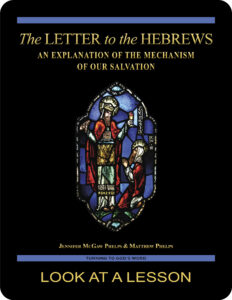hope
 The Letter to the Hebrews 1:1 (NABRE) teaches: “Faith is the realization of what is hoped for and evidence of things not seen.” Although often quoted as a definition of faith, this verse seems to be more about the relationship between faith and hope than it is a definition of either.
The Letter to the Hebrews 1:1 (NABRE) teaches: “Faith is the realization of what is hoped for and evidence of things not seen.” Although often quoted as a definition of faith, this verse seems to be more about the relationship between faith and hope than it is a definition of either.
The Greek word ἐλπίς (helpis) is the word that is translated into English as hope and also can be translated as “expectation.” In common English usage, hope is a weak word that conveys desire rather than expectation. If anything, the word probably has come to convey the opposite of expectation. For example, we would say: “I hope it doesn’t rain tomorrow” only when we have some expectation that it will in fact rain.
As understood by the Greeks and indeed also in Christian understanding, the word hope is intended to convey firm expectation. In this sense, saying: “I hope it doesn’t rain tomorrow” indicates a firm conviction and expectation that it won’t rain. I’ll leave the house without a jacket or umbrella. More about faith can be read in my recent post, through faith. The short summary is that faith is equivalent to trust.
How do these two concepts interplay in the Letter to the Hebrews? “What is hoped for” are the things we expect to happen. Faith is our trust in God that makes those things present to us even before they become ours—it is their realization. In this sense, faith is a necessary precondition of hope. When I trust God, I gain the ability to expect him to provide me with good things.
What do you hope for? Do you have the faith to truly believe that God will give you those things?
related topics: glory; righteousness; salvation
you also may like our study of the Letter to the Hebrews (digital only)
 Many Christians struggle to understand one of the central mysteries of our faith: how Jesus can be both human and divine at the same time. The Letter to the Hebrews: An Explanation of the Mechanism of Our Salvation, an 18-lesson Catholic Bible study with an imprimatur, offers an in-depth look at the way in which Jesus’ dual nature allows for the salvation of humanity. The Letter to the Hebrews is designed to provide information that will encourage Christians to remain faithful. Click on the book’s cover to view a sample lesson.
Many Christians struggle to understand one of the central mysteries of our faith: how Jesus can be both human and divine at the same time. The Letter to the Hebrews: An Explanation of the Mechanism of Our Salvation, an 18-lesson Catholic Bible study with an imprimatur, offers an in-depth look at the way in which Jesus’ dual nature allows for the salvation of humanity. The Letter to the Hebrews is designed to provide information that will encourage Christians to remain faithful. Click on the book’s cover to view a sample lesson.
 Click on the picture of the statue of Moses with horns (above) to learn more about Lost in Translation. A new entry is archived each Monday. Contact us to receive Lost in Translation by email every week. You may use any of the contact links on our website to ask Matthew a question.
Click on the picture of the statue of Moses with horns (above) to learn more about Lost in Translation. A new entry is archived each Monday. Contact us to receive Lost in Translation by email every week. You may use any of the contact links on our website to ask Matthew a question.
